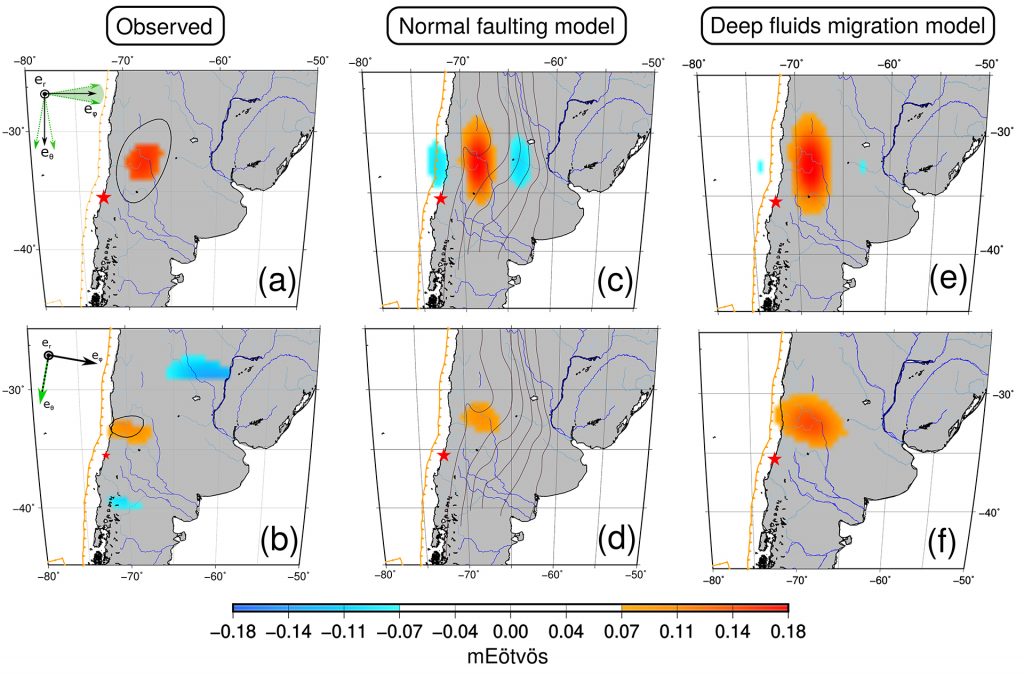Deep plate movements prior to a mega-earthquake detected in the Earth’s gravity field
A study led by researchers from IPGP, IGN and Université Paris Cité, shows that deep mass redistributions can be observed prior to a subduction zone mega-earthquake, thanks to gravity field measurements performed by the GRACE satellite. By eliminating hydrological sources from the global gravity signal, the French team shows that the observed anomalies appear to be consistent with a stretching of the plunging plate at around 150 km depth in the mantle, suggesting that the giant Maule rupture in Chile in 2010 may have originated in a surface propagation of this plunging plate deformation.

Publication date: 19/04/2022
Press, Research
Related teams :
Geodesy
Related themes : Earth and Planetary Interiors, Natural Hazards









